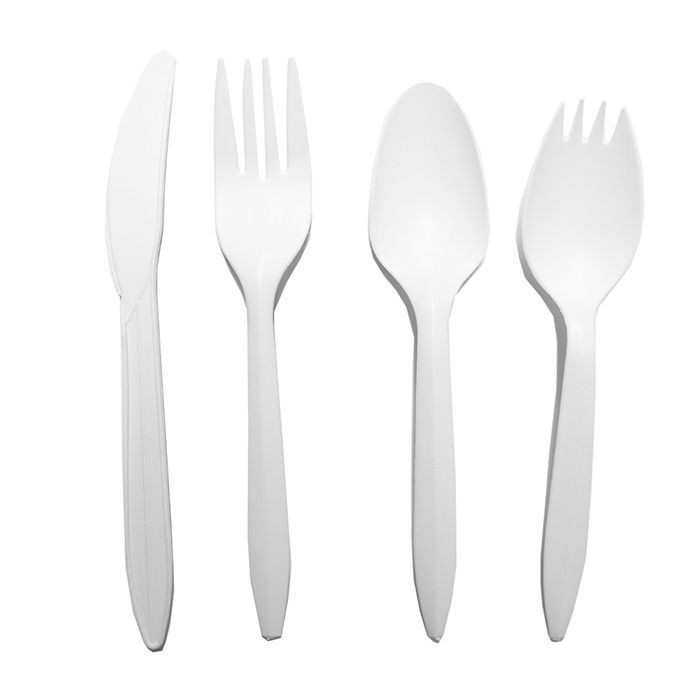Do PSM Spoons get stained easily?
Nov 07, 2025
As a trusted supplier of PSM Spoons, I've received numerous inquiries about whether these spoons get stained easily. This question is crucial for both consumers and businesses, as it directly impacts the usability and aesthetic appeal of the cutlery. In this blog, I'll delve into the factors that affect the staining of PSM Spoons, provide scientific insights, and share some practical tips to maintain their cleanliness.
Understanding PSM Spoons
PSM Spoons are part of a line of Recyclable Disposable Cutlery that offers a sustainable alternative to traditional plastic utensils. These spoons are made from high - quality materials that are designed to be both functional and environmentally friendly. They are commonly used in various settings, such as restaurants, cafes, picnics, and catering events.
The Science Behind Staining
Staining occurs when certain substances, known as chromophores, attach to the surface of the spoon. Chromophores are molecules that absorb and reflect light in a way that gives them a distinct color. Foods and beverages with high chromophore content, such as coffee, tea, red wine, and tomato - based sauces, are more likely to cause staining.
The susceptibility of PSM Spoons to staining depends on several factors:
Material Composition
The material used to make PSM Spoons plays a significant role in its staining properties. PSM Spoons are typically made from bio - based polymers or recycled materials. These materials have different surface characteristics compared to traditional plastic. Some bio - based polymers may have a more porous surface, which can make them more prone to absorbing chromophores. However, modern manufacturing techniques have been developed to minimize porosity and improve the resistance of these spoons to staining.
Surface Finish
The surface finish of the spoon also affects staining. A smooth surface is less likely to trap chromophores compared to a rough or textured surface. PSM Spoons are often designed with a smooth finish to reduce the adhesion of food particles and stains. Additionally, some spoons may have a protective coating that further enhances their stain - resistance.
Contact Time and Temperature
The longer the PSM Spoon is in contact with a staining substance, the more likely it is to become stained. Similarly, higher temperatures can accelerate the staining process. For example, if you leave a spoon in a hot cup of coffee for an extended period, the heat can cause the chromophores in the coffee to bond more strongly to the surface of the spoon.
Testing the Stain Resistance of PSM Spoons
To provide a more objective assessment of whether PSM Spoons get stained easily, we conducted a series of tests. We exposed PSM Spoons to various staining agents, including coffee, tea, red wine, and tomato sauce, under controlled conditions.
Procedure
We prepared samples of each staining agent and placed PSM Spoons in them for different durations (1 hour, 3 hours, and 6 hours) at room temperature and at 50°C (to simulate hot beverages). After the exposure period, we rinsed the spoons with water and evaluated the degree of staining using a visual scale.
Results
The results showed that PSM Spoons had a relatively good resistance to staining. After 1 hour of exposure to most staining agents at room temperature, the spoons showed only minor discoloration. However, after 6 hours of exposure, especially at higher temperatures, there was more noticeable staining, particularly with red wine and tomato sauce.
It's important to note that compared to traditional plastic spoons, PSM Spoons performed similarly or better in terms of stain - resistance. This is likely due to the improved surface finish and material properties of PSM Spoons.
Tips to Prevent Staining
Although PSM Spoons have a reasonable level of stain - resistance, there are several steps you can take to minimize staining:
Prompt Cleaning
The most effective way to prevent staining is to clean the PSM Spoon as soon as possible after use. Rinse the spoon under running water to remove any food particles, and then wash it with mild dish soap. This will prevent the chromophores from bonding to the surface of the spoon.
Avoid Prolonged Contact
Try to avoid leaving PSM Spoons in staining substances for an extended period. If you're using a spoon to stir a hot beverage, remove it promptly after stirring.
Use a Protective Barrier
If you're serving highly staining foods or beverages, you can use a protective barrier, such as a napkin or a liner, between the spoon and the staining substance. This can reduce the direct contact and minimize staining.
Other PSM Cutlery Options
In addition to PSM Spoons, we also offer PSM Forks and PSM Spork. These cutlery items have similar stain - resistance properties to PSM Spoons. They are designed to complement each other and provide a complete set of disposable cutlery for various dining occasions.


Conclusion
In conclusion, whether PSM Spoons get stained easily depends on several factors, including material composition, surface finish, contact time, and temperature. While they are not completely immune to staining, modern PSM Spoons have been engineered to have a good level of stain - resistance. By following the tips mentioned above, you can minimize staining and keep your PSM Spoons looking clean and presentable.
If you're interested in purchasing PSM Spoons, PSM Forks, or PSM Sporks for your business or personal use, we invite you to contact us for more information and to discuss your specific requirements. We're committed to providing high - quality, sustainable cutlery solutions that meet your needs.
References
- "Principles of Polymer Science" by Fred W. Billmeyer Jr.
- "Food Chemistry" by Owen R. Fennema
- "Surface Chemistry and Its Applications" by Arthur W. Adamson
